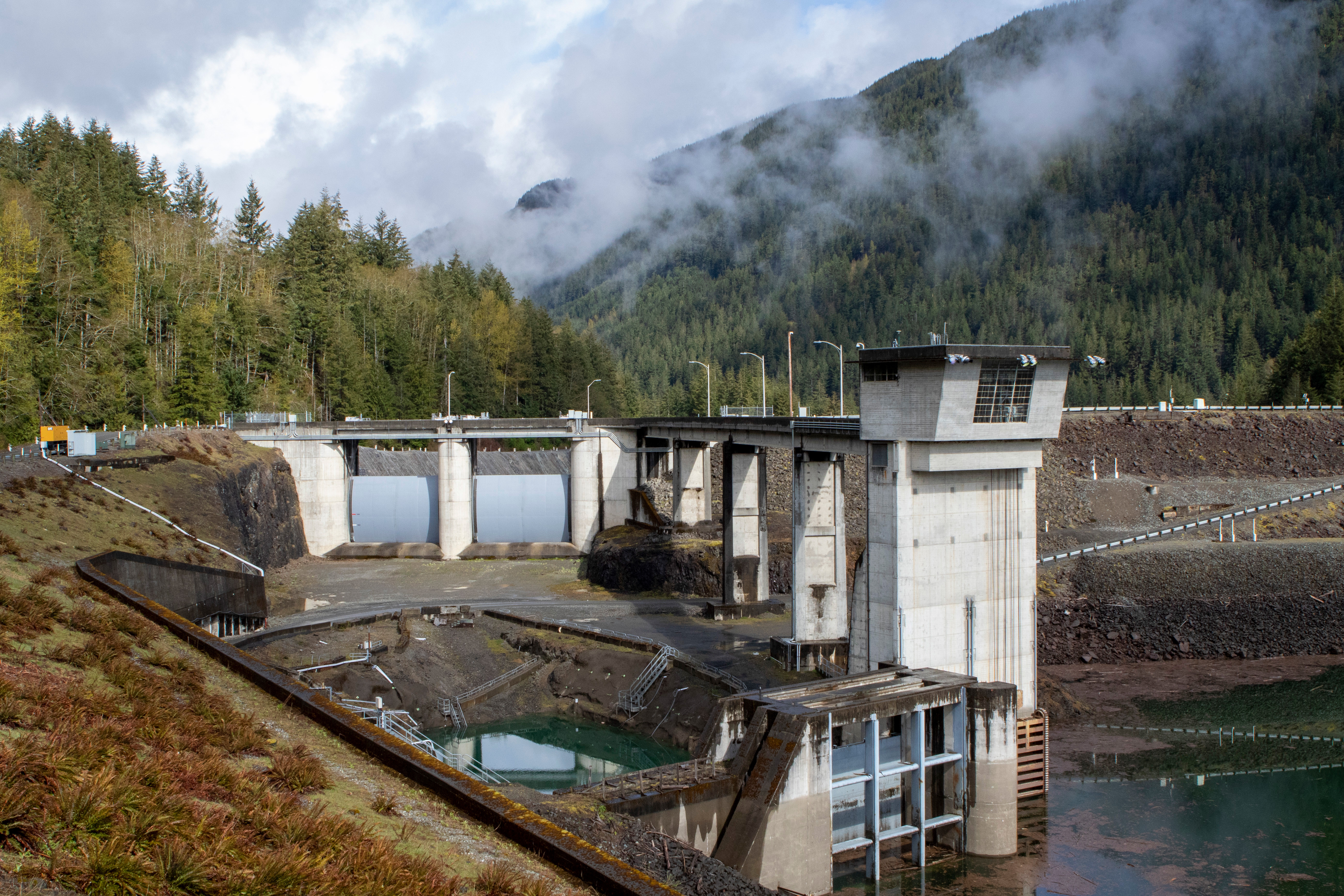Howard A. Hanson Dam is a U.S. Army Corps of Engineers dam located near the headwaters of the Green River in King County. It's primary purpose is flood risk reduction in the winter and fish enhancement in the summer.
 Before its construction, the Green River frequently flooded the Green River Valley. In the last 70 years, the Valley has flooded over 30 times, causing significant damage to property and farmland. Residents still recall the devastating December 1959 flood, which submerged homes up to the second story and washed away valuable topsoil into Puget Sound. After witnessing the destruction, the state’s governor remarked, “We regard water as one of this state's greatest assets, but I never quite realized until today how terribly destructive it can be.” The dam began operation in 1961, effectively ending the Valley’s history of major floods.
Before its construction, the Green River frequently flooded the Green River Valley. In the last 70 years, the Valley has flooded over 30 times, causing significant damage to property and farmland. Residents still recall the devastating December 1959 flood, which submerged homes up to the second story and washed away valuable topsoil into Puget Sound. After witnessing the destruction, the state’s governor remarked, “We regard water as one of this state's greatest assets, but I never quite realized until today how terribly destructive it can be.” The dam began operation in 1961, effectively ending the Valley’s history of major floods.
Efforts to control the Green River began as early as 1928. In 1936, community and congressional leaders requested the Army Corps of Engineers’ Seattle District to identify the best location for a flood management project.
Though delayed by World War II, the Corps selected Eagle Gorge in 1949 and Congress approved funding six years later. Ultimately, Congress allocated 37 million, supplemented by 1.5 million from Washington State and $500,000 from King County.
Construction, including 13 miles of railroad relocation, began in February 1959. The dam became operational on Christmas Day, 1961, ahead of its scheduled completion in April 1962. Since then, the Green River Valley has attracted industry and experienced substantial economic growth. The Howard A. Hanson Dam has prevented an estimated $6 billion in flood damage since the January 2009 flood.
The dam spans Eagle Gorge, a ravine with steep rock walls. The reservoir behind it collects runoff from 220 square miles of the Green River’s 483-square-mile drainage area. In winter, the reservoir remains mostly empty, allowing the river to flow through a gate-controlled tunnel. After storms, the tunnel gates regulate the flow, holding excess water and releasing it at a safe rate. The reservoir is emptied as quickly as possible to prepare for future runoff. In extreme situations, water can be released via the spillway, though this has never been necessary.
As the risk of flooding decreases by March, the dam shifts to water conservation. The reservoir gradually fills, supplementing low summer flows to support fish migration and spawning. This benefits sport fishing for steelhead trout, coho, and chinook salmon in the Green River and Puget Sound.
Located within a closed watershed, public access to the dam is restricted. The Green River provides Tacoma’s primary water source, collected and purified at a facility three miles downstream. The dam is surrounded by the protected Tacoma watershed, established in 1914 through an agreement between the city of Tacoma and the U.S. Forest Service and closed to the public.
Click here for the current fact sheet.